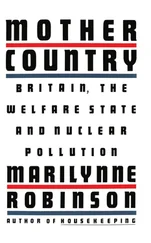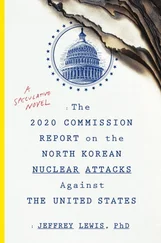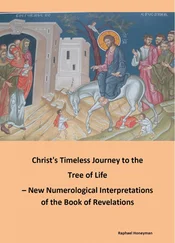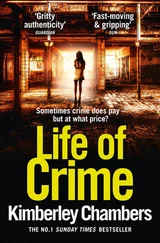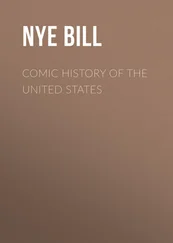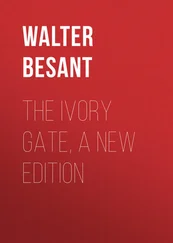These conditions hardly left room for much in the way of new multilateral schools. To have big enough sixth forms, the ministry was calculating that comprehensives would need to be huge – 1500 to 1700 places. It still saw multilaterals (which could be different types of school on the same site, or different types of school linked as one, or what would now be recognised as a comprehensive) as experimental. So they were: in effect there were none. So when some authorities planned to move quickly to comprehensives, as Labour-controlled Middlesex did, George Tomlinson approved the plans for only three schools, not the six the county wanted.
The London County Council drew up plans to go entirely comprehensive, its sweeping proposals to put 91 per cent of its children into them drawing fire even from supporters of the idea. Harold Dent wrote in 1954: ‘The idea of the comprehensive school has never quite recovered from the blow dealt it when England’s largest municipality decided to adopt it. Even some people not entirely averse from the idea of trying out the comprehensive, or multi-lateral school, criticised the London County Council for embarking upon a total policy of comprehensive schools instead of beginning by setting up one or two as an experiment.’ 21Indeed, one of the fairest criticisms that can be made of proponents of both systems is that neither over the next forty years organised any really robust research to show which system, comprehensives or grammar/secondaries, produced the best results overall.
Comprehensives did, however, begin to emerge. Windermere in Westmorland won the distinction of being the first in 1945, and that with only 220 pupils, and the Welsh island of Anglesey became the first all-comprehensive county in 1950. But by the time Labour left office in 1951, there were fewer than twenty genuine comprehensive schools in England and Wales 22along with some bilaterals – usually a mix of grammar and technical school. Comprehensive activists persuaded the Labour Party conference in 1946 and 1947 to call for a policy of ‘common schools’, and by 1951 the idea was in the manifesto. But it was there only in the weasel words of ‘greater equality of opportunity’, for the Labour Party as a whole was not won over to comprehensives and was not so to be until the mid-1960s. 23Many Labour authorities were proud of their grammar schools and teachers held as wide a spread of opinion on the issue as any other grouping, the National Union of Teachers only adopting comprehensives as union policy when the government finally did so in the 1960s. Between 1945 and 1951 the grammars themselves mounted a vigorous defence of their role, led intellectually by heads of the still independent direct grant schools, 164 out of 232 of which had survived a pruning of their numbers by Labour. 24Dr Eric James, headmaster of Manchester Grammar School, argued that comprehensives would involve ‘a retardation in the progress of the most gifted children’. That would be a denial of equal opportunity, he maintained, neatly turning the argument used by the supporters of comprehensives on its head. It would also be ‘a national disaster’, denying the best education to those best suited to solve the country’s problems. 25That argument was to be heard many times in succeeding years, and many Labour politicians both nationally and locally had sympathy with it. They may have wanted equality of opportunity, but many were themselves the products of grammar schools. They knew from personal experience how grammars gave the chance to bright, working-class children to break free. Labour, Kenneth Morgan has said, retained ‘an instinctive faith in the grammar schools, the bright working-class child’s alternative to Eton and Winchester’. 26And the Times Educational Supplement commented in 1951 when Labour left office that ‘it is extremely doubtful whether Mr Tomlinson ever once lifted a hand’ to encourage more comprehensives. 27
Educational development was not eased by the convertibility crisis of 1947 which, after a spell of considerable economic growth, was followed by the sterling crisis of 1949 and the spectacular devaluation of the pound from $4 to $2.80. Both crises produced spending cuts. The emergence of the Cold War followed by rearmament for Korea in 1950 put further pressure on social spending. The increase in education spending slowed from a £24.5 million rise in 1948–9 on a budget of £138 million the previous year, to an increase of only £7.5 million for 1951–2 taking it to just £200 million, the slow-down in growth coming against rising numbers of pupils as the baby-boom generation reached school age.
As a result nursery education went by the board. The promised county colleges for post-fifteen education failed to emerge. Technical schools remained a rarity. Competition for grammar school places if anything increased. Classes of fifty and sixty (Butler’s Education Act had aimed at thirty) were common as late as 1949, some in schools that had been blacklisted since long before the war. As late as 1951 a Commons debate showed around 250,000 children were still being taught in classes of more than forty, with 83,000 of them in classes of fifty or more. 28
There were plenty of silver linings. The quality of provision did slowly improve. School fees had gone, outside the public schools and a proportion of direct grant school places – a boon to the middle classes, who had mainly paid them in the past, but also opening up education to working-class children who had frequently faced family pressure to start work so as to earn money rather than cost it. Compulsory education now lasted a year longer, even if some teachers initially struggled to know what to do with the extra time in crowded classrooms with no examination goals to convince non-grammar school children of its value. New schools were being built: 150 new secondaries were under way in 1951, mainly in the suburbs, and some were of award-winning design and quality. 29
There had also been gains in higher education. Several thousand men and women discharged from the armed forces were put through university without the normal pre-entry qualifications. Many came at an age older than the usual student, glad to be alive and with an immense enthusiasm, producing what some dons in the days of student revolt in the late 1960s were to remember as a brief golden age. Too late for the schools-based Butler Act, the Percy report in 1945 called for a rapid increase in the number of engineering graduates in a limited number of local technical colleges. The report, however, drew a damaging distinction between universities and technical colleges, arguing that universities were for scientists, the colleges for technologists. An arcane and very British dispute over whether the awards should be a degree (BTech) or a diploma (Dip. Tech.) held up into the 1950s even the real progress Percy did offer, the universities jealously guarding their right to award degrees while the professional institutions, the mechanicals, electricals and others, fought to protect their position as the awarders of professional qualifications. 30As the Times Educational Supplement was later to put it, the outcome was ‘the universities taking the high road and the technical colleges the low’. 31
The case for expanding higher education was strengthened a year later, however, when the Barlow committee on scientific manpower, set up by Labour, recommended a doubling of science graduates. The invention of radar for the Battle of Britain had helped save the country at the beginning of the war. Penicillin had saved lives in the middle and was coming into civilian use. Hiroshima and Nagasaki had produced a cataclysmic conclusion, and the scientists were now promising unlimited cheap power from ‘atoms for peace’. A faith in science had been triggered that was not to peak until after Wilson had turned its promise into the election-winning ‘white heat of the technological revolution’ in 1963. ‘Never before has the importance of science been so widely recognised,’ the Barlow committee stated, ‘or so many hopes of future progress and welfare founded upon the scientist.’ 32
Читать дальше
![Nicholas Timmins The Five Giants [New Edition]: A Biography of the Welfare State обложка книги](/books/701739/nicholas-timmins-the-five-giants-new-edition-a-cover.webp)
